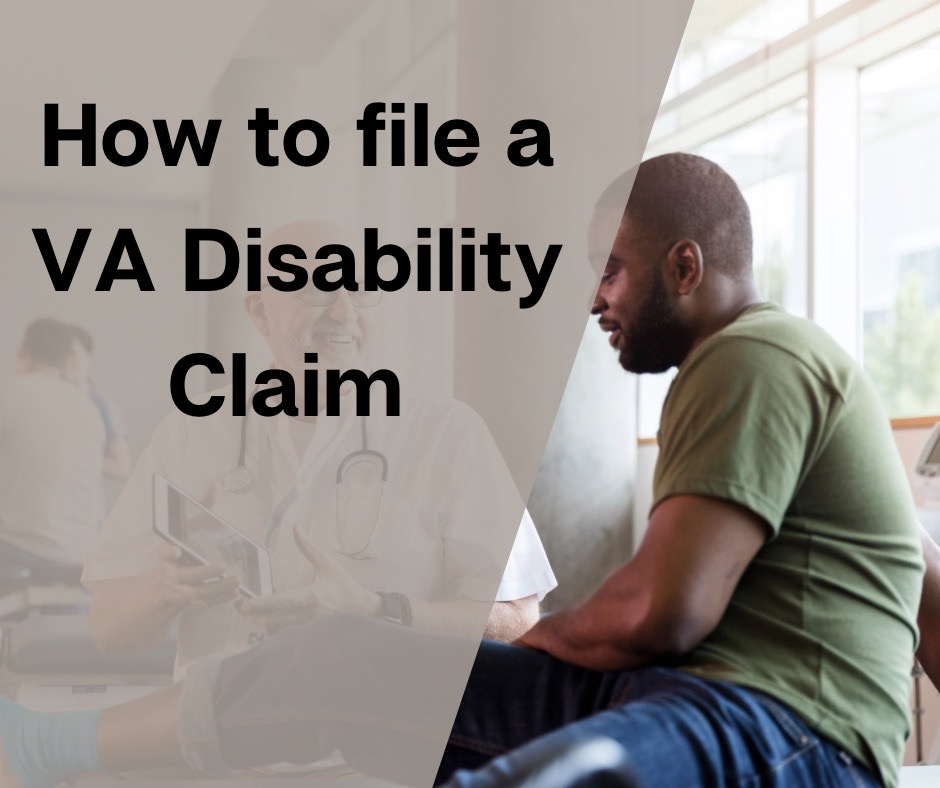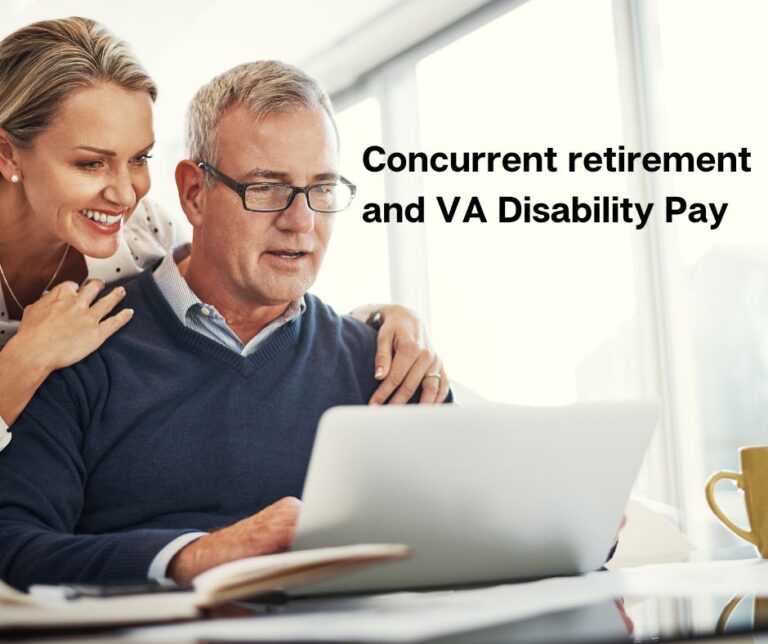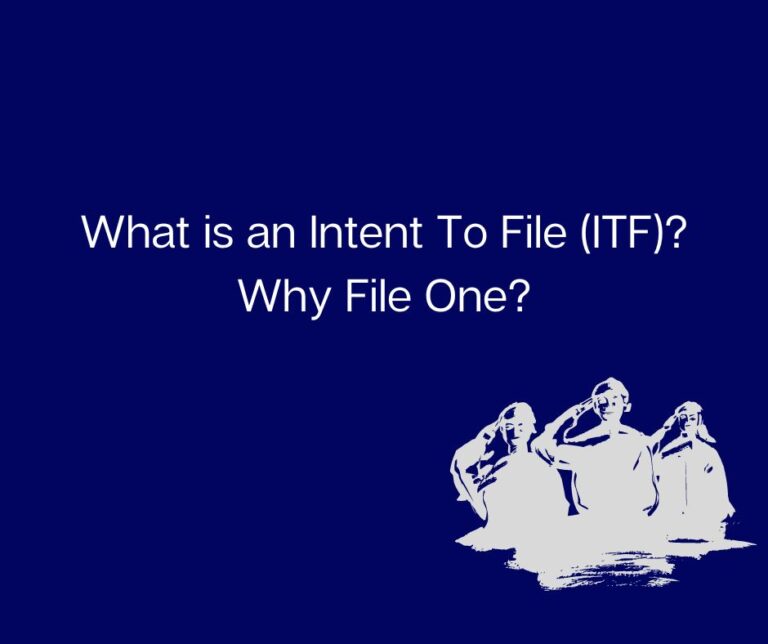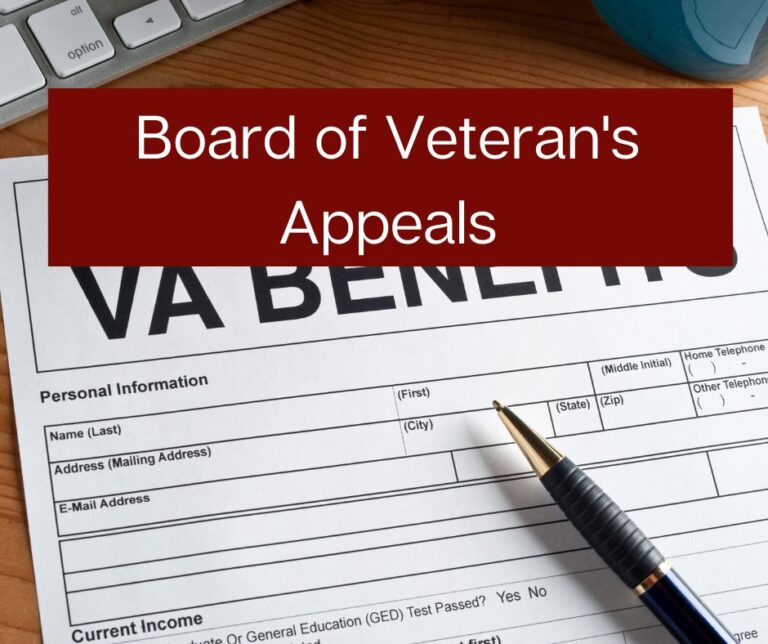How to File a VA Disability Claim
Filing a disability claim with the VA is not extremely difficult. However, it is interesting how many Service Members leave service without a clear idea of what to do. It is unfortunate that often times the Transition Assistance Program does not effectively share enough information regarding the Veterans Administration and how to navigate the paperwork involved in dealing with it.
That is where a knowledgeable Veteran Service Officer (VSO) can be helpful. VSO’s are trained and accredited to work with the VA. They do not charge Veterans for services and are in place to help Veterans file paperwork for disability claims and pensions. Also, Many VSOs are able to help file for other VA Benefits such as the GI Bill or VR&E. And most will help surviving family members file for survivors benefits.
There are, then, two routes to filing for VA disability. A Veteran can go to a VSO for assistance, or file the claim themselves. We will look at both ways below.
VSO Assisted
This is probably the easiest method for most people. However, there are instances where Veterans may simply want to file on their own or may be unable to have access to a VSO. In such instances, we will look at the self-filing option below.
What to Bring In to the VSO
If you are going to use a VSO to file the claim, there is certain paperwork you need to take in with you. This includes:
- DD214
- Medical Records (which are not already held by the VA)
- Marriage Certificate
- Divorce Certificates (if applicable) or Dates
- Previous Marriage Certificates (if applicable) or dates and names
- Birth Certificates of any dependent children
- Service Treatment Records (if applicable)
Veterans will need more paperwork to file for a pension:
- Proof of ALL income
- Proof of any unreimbursed medical expenses
- Information on any other assets
- Proof of any other HOUSEHOLD income
The appointment will go smoothly and the claim should be filed relatively quickly if the Veteran brings in all of the required paperwork. Notice that we say filed relatively quickly. As of this writing the VA Benefits Administration (VBA) is currently over 200,000 cases behind and working quickly to catch up. However, expect that your case will not necessarily take precedence over everyone else in the system. Have patience. The VA will work the case as they can.
Filing a VA Disability Claim Yourself
The first thing for a Veteran to do is file an “Intent to File” (ITF) with the VA. This form lets the VBA know that the Veteran is preparing to file a claim. The start date of the claim is the day the VA receives the paperwork. The Veteran has one year from that date to get their claim in to the VA. If they get it in within the year and the claim is approved, they will be receive pay back to the Start Date of the Intent to File.
After filing the ITF, the Veteran should get together all of their medical files to show the disabilities they want to file for.
Medical Files
Service Treatment Records – If this is the first time that the Veteran has filed for a disability AND they have never provided a copy of their STR to the Veterans Administration, it may be necessary to provide the portion of their STR which concerns the issue they want to be compensated for. In other words, if a Veteran is filing for back pain from a bad landing on a jump five years before, they would be well served to provide the doctors notes from their Service Treatment Records establishing that the accident actually occurred.
Private Practice – If the Veteran has been under the care of a private doctor, they will need to provide a copy of those records to the VBA.
Under the VA’s ‘duty to assist’, the Veteran can fill out a form and ask the Veteran to retrieve the medical records from the private practice. However, if the private doctor does not follow through and send the files, it is the Veteran’s responsibility to make sure the records are available. We always suggest to Veterans that it would be best if they get the forms and submit them personally.
VA Medical Files – If the Veteran is being treated at a VA Medical Facility, they do not need to request those records. The VBA will pull those records from the VA Health Administration when they require them.
Filing the Claim
The Veteran can file the claim online or by mail. If a Veteran wants to file the claim by mail, they can print out the necessary forms from the VA website, fill them out, and then mail them in to their Regional Office (listed on the VA website).
Veterans can easily fill out claims online. The VA website will walk a Veteran through a wizard to fill out the claim form online and submit it to the VBA. Veterans will still be required to provide a copy of their DD214 along with Marriage Certificates and Birth Certificates of any dependent children.
After filing the claim, be patient. The VA corresponds via regular mail. A Veteran will receive a letter stating that the VBA has received their claim and are processing it. After that, they may receive instructions to attend a C&P exam (information below). They may also receive a request to provide more information. If so, they generally only have 30 days to reply, so it is best to submit the information immediately.
The Veteran should receive an approval or denial letter next. If the claim is approved, the money should begin to be received on a monthly basis to the bank account the Veteran noted in the Claim form. If the claim is denied, the Veteran has the option to appeal the claim.
Compensation and Pension (C&P) Exams
C&P Exams are not to be feared. They are generally conducted by a private practitioner who is under contract with the VA to conduct the examinations. They will have received your information and a copy of your medical files from the VA, along with instructions on what they are to conduct the examination for. If the C&P exam is for a Veteran’s lower back pain, they won’t look at the Veteran’s right elbow problem. They are contracted to conduct the exam on exactly what the VA has instructed them to do.
That being said, Veterans should remember that it is an examination for their health and their compensation. Veterans should take charge of the conversation and ensure that the examiner receives all of the information. Don’t take this as an opportunity to complain about what the VA has or has not done. Also don’t complain about what another C&P examiner may have done or not done. Simply stick to the medical facts under examination. The Veteran should be ready to explain how the disability affects their daily life.
Receiving the Decision
We have heard the question asked dozens of times, and seen it on Social Media every day. It goes something like this. “I had my C&P exam yesterday. How long does it take to get a decision now?”
The simple answer is, there is no answer to that question. Just because another Veteran received their decision in two months doesn’t mean everyone’s will take the same amount of time. The time will depend on the rater, any other information they may be waiting on, other backlogged cases, and a host of other issues. Simply be patient and the decision letter will come.
And that is it. We have written in other places about the appeal process if you are interested. Supplemental claims can be found here, while you can read about Higher Level Reviews or the Board of Veteran Appeals by clicking on the appropriate links.
As always, if you have any questions, please feel free to leave a comment or send an email to info@nwavet.org.
God Bless,
-NWAVet







